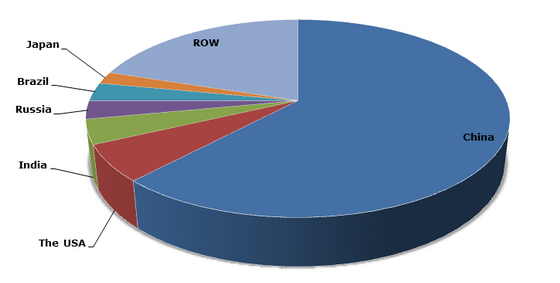Lime and its products have multiple functions. They are used in metallurgy, flue-gas desulfurization (FGD) and environment protection, chemical and industrial applications (glass & ceramics, paper & cellulose industry, sugar production, refractories, etc), construction, agriculture and other sectors. The volume of lime consumption in each sector depends on the specific region, but the predominance of metallurgic, industrial/chemical and environmental uses are mostly universal. However, lime uses change with time, driven by innovations and modern life urgencies [source: Walker, D.D., Hardy, T.B., Hoffman, D.C. and Stanley, D.D. (1992) ‘Innovations and Uses for Lime’, Baltimore: ASTM International].
Currently, one can witness this change in the decrease in the lime use by the steel industry and in the rise of environmental applications of lime. Rising lime production volumes persuade some experts in the bright prospects of the global lime market, while others, like Richard Stansfield, managing director of Singleton Birch, talk about ‘the continued depressed state of the lime market’. This duality is likely to retain as new (and old) limitations and opportunities will continue to influence the lime market. On the one hand, lime versatility and its broad range of products, supported by innovative technologies and environmental concerns, give reasons for optimism. On the other hand, multiple downsides of the lime market provide grounds for pessimistic scenarios. Such downsides include large fragmentation of the lime market, unregulated and dilapidated character of many lime-manufacturing facilities, poor lime statistics, high demand volatility, and often inadequate margins. Ironically, the importance of lime as environmentally vital product does not preclude its market from being adversely affected by stringent environmental regulations.
Despite these issues, the lime market will continue to expand, though at a slower pace than it occurred during the previous decade. The market growth will be driven mostly by China (with 63% share in the world lime production) and other developing countries.
Lime: structure of the world mine production by country, 2013

For example, countries like Jamaica have the potential to become major suppliers of limestone if lime industries in these countries are properly managed, legislated, and financed. The indispensible elements for the origination of the lime-manufacturing industries of regional significance include the construction of integrated processing facilities, proximity to high-quality feedstock, modern environmentally-friendly technologies, sound economics, as well as availability of ample and versatile sales markets.
More information on the lime market can be found in the insightful research report “Lime: 2015 World Market Review and Forecast”.
